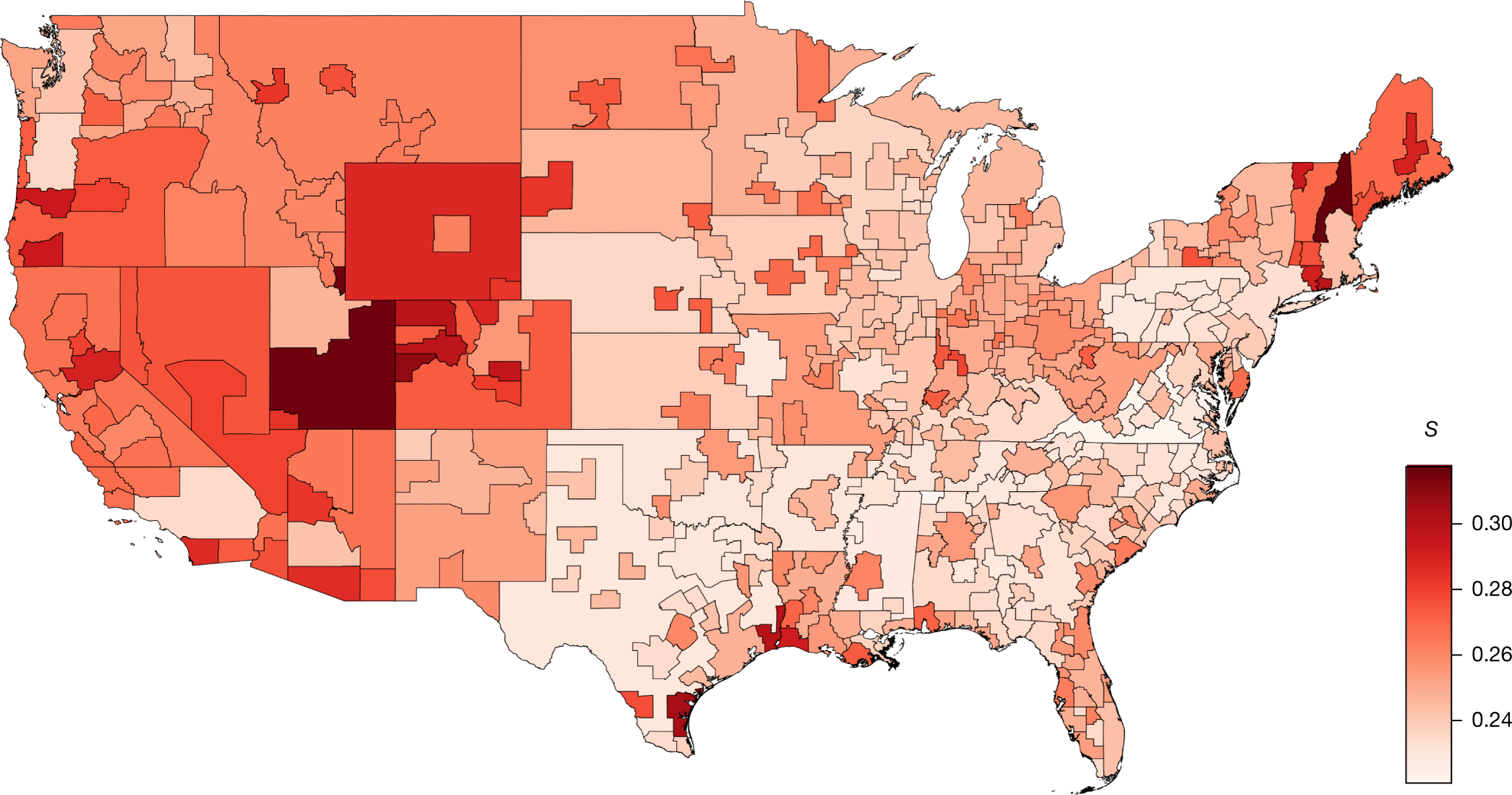Supply chain diversity buffers cities against food shocks
From https://www.nature.com/articles/s41586-021-03621-0
Link to pdf:
https://www.nature.com/articles/s41586-021-03621-0.pdf
Supply chain diversity buffers cities against food shocks
Michael Gomez, Alfonso Mejia, Benjamin L. Ruddell & Richard R. Rushforth
Nature volume 595, pages 250–254 (2021)
Abstract
Food supply shocks are increasing worldwide1,2, particularly the type of shock wherein food production or distribution loss in one location propagates through the food supply chain to other locations3,4. Analogous to biodiversity buffering ecosystems against external shocks5,6, ecological theory suggests that food supply chain diversity is crucial for managing the risk of food shock to human populations7,8. Here we show that boosting a city’s food supply chain diversity increases the resistance of a city to food shocks of mild to moderate severity by up to 15 per cent. We develop an intensity–duration–frequency model linking food shock risk to supply chain diversity. The empirical–statistical model is based on annual food inflow observations from all metropolitan areas in the USA during the years 2012 to 2015, years when most of the country experienced moderate to severe droughts. The model explains a city’s resistance to food shocks of a given frequency, intensity and duration as a monotonically declining function of the city’s food inflow supply chain’s Shannon diversity. This model is simple, operationally useful and addresses any kind of hazard. Using this method, cities can improve their resistance to food supply shocks with policies that increase the food supply chain’s diversity.
[...]

Fig. 2: Map of expected shock intensities of an annual duration food supply chain shock with annual occurrence probability of 1%.
From: Supply chain diversity buffers cities against food shocks
The shock intensities are represented as a fraction of the average annual inflows. The annual occurrence probability of 1% is also known as a 100-year food supply shock.
[..]
